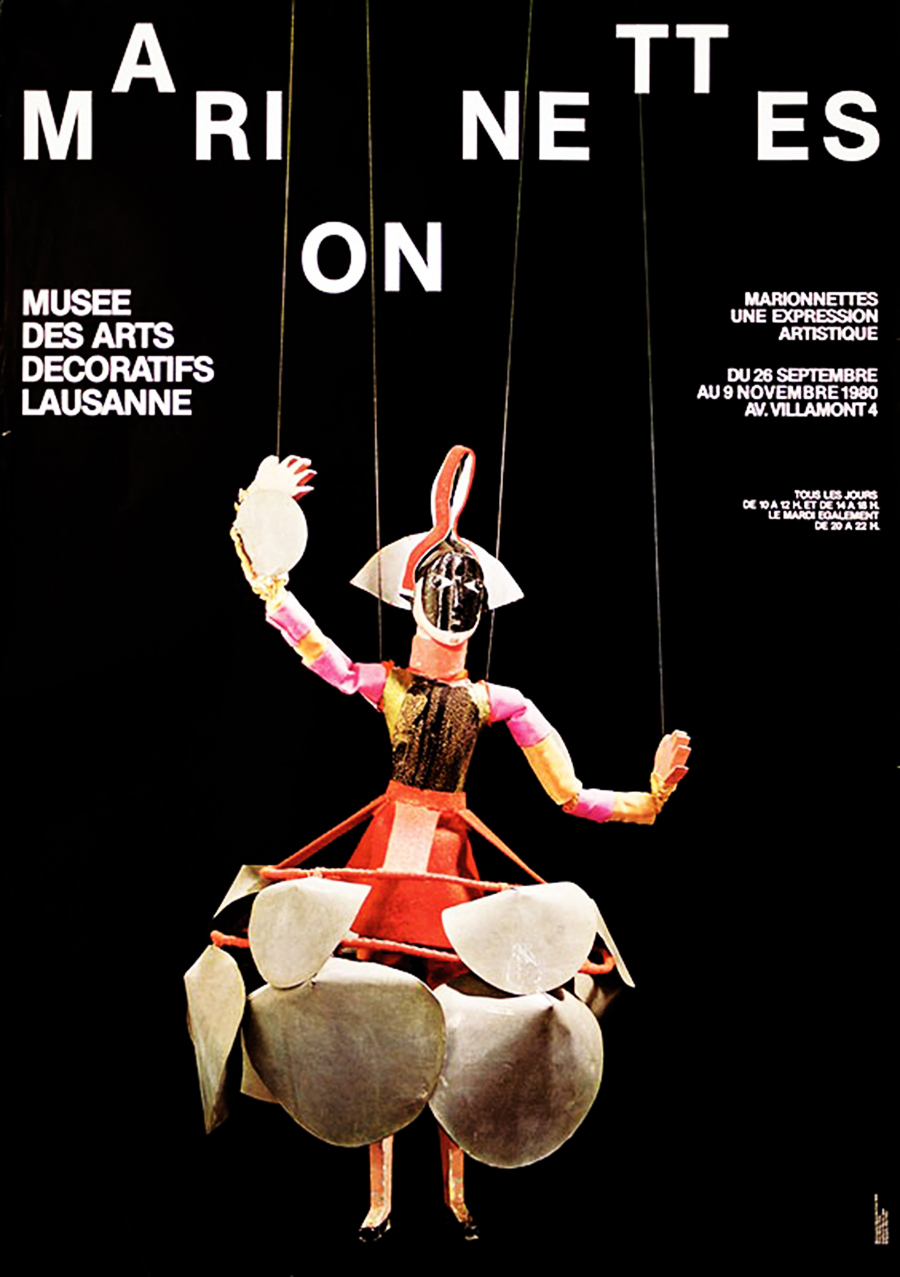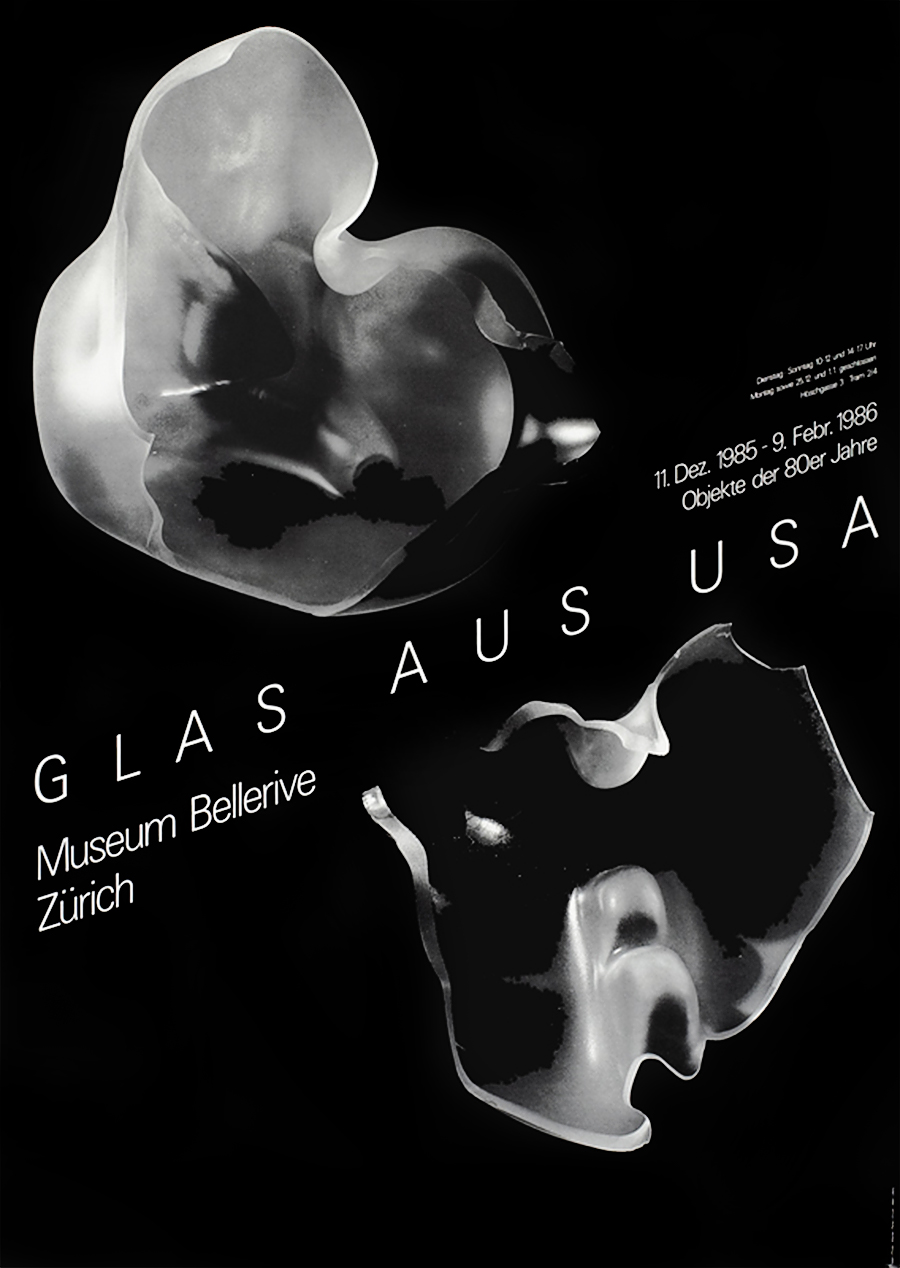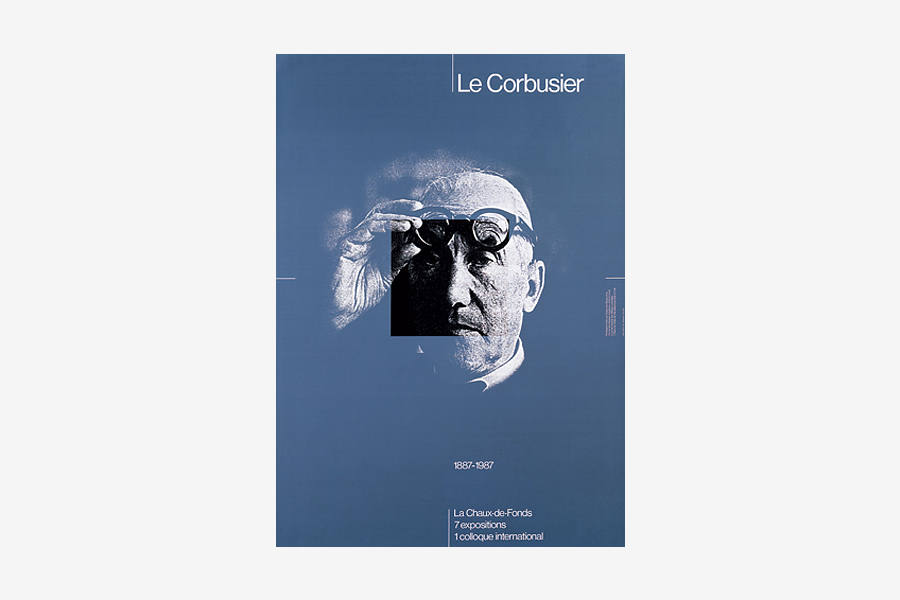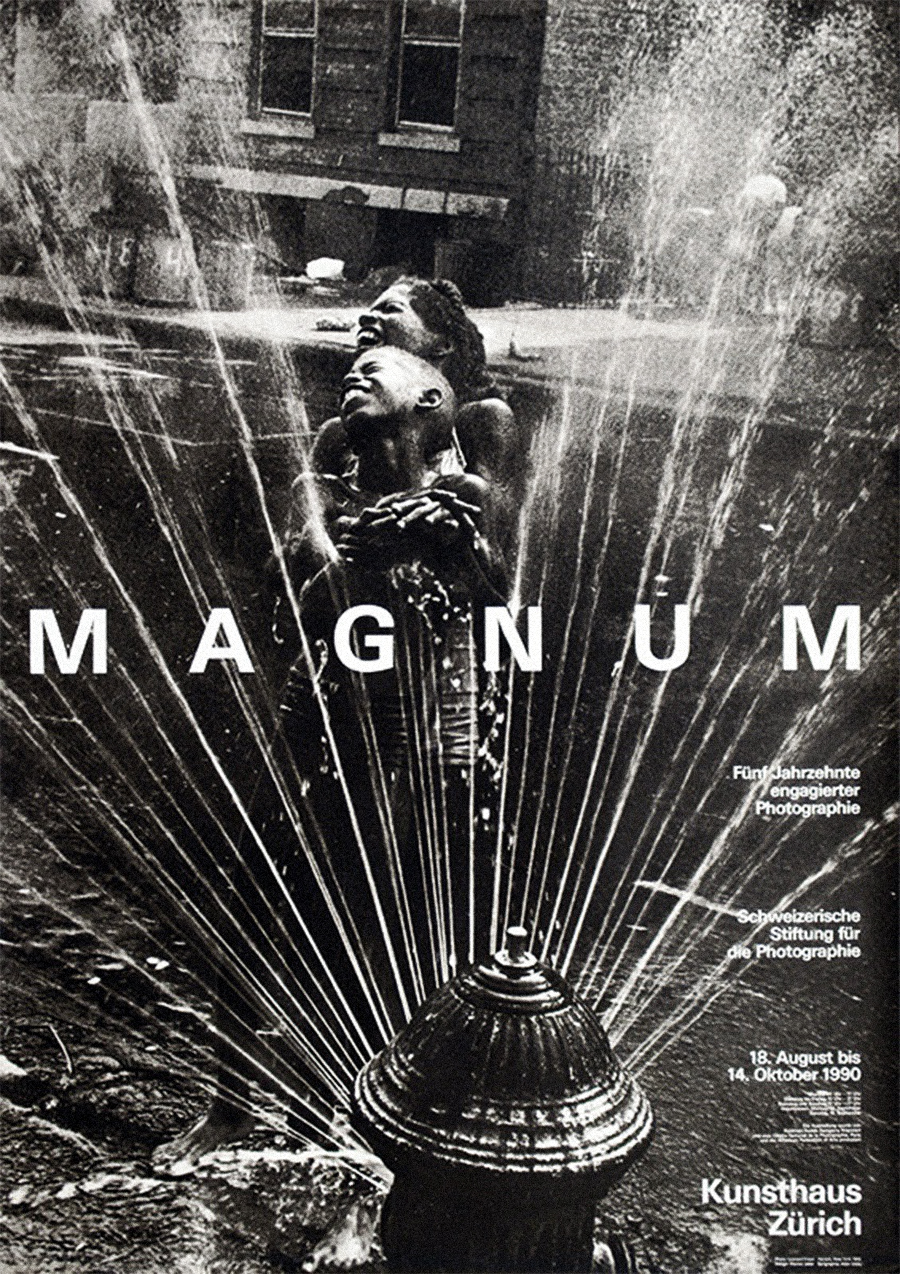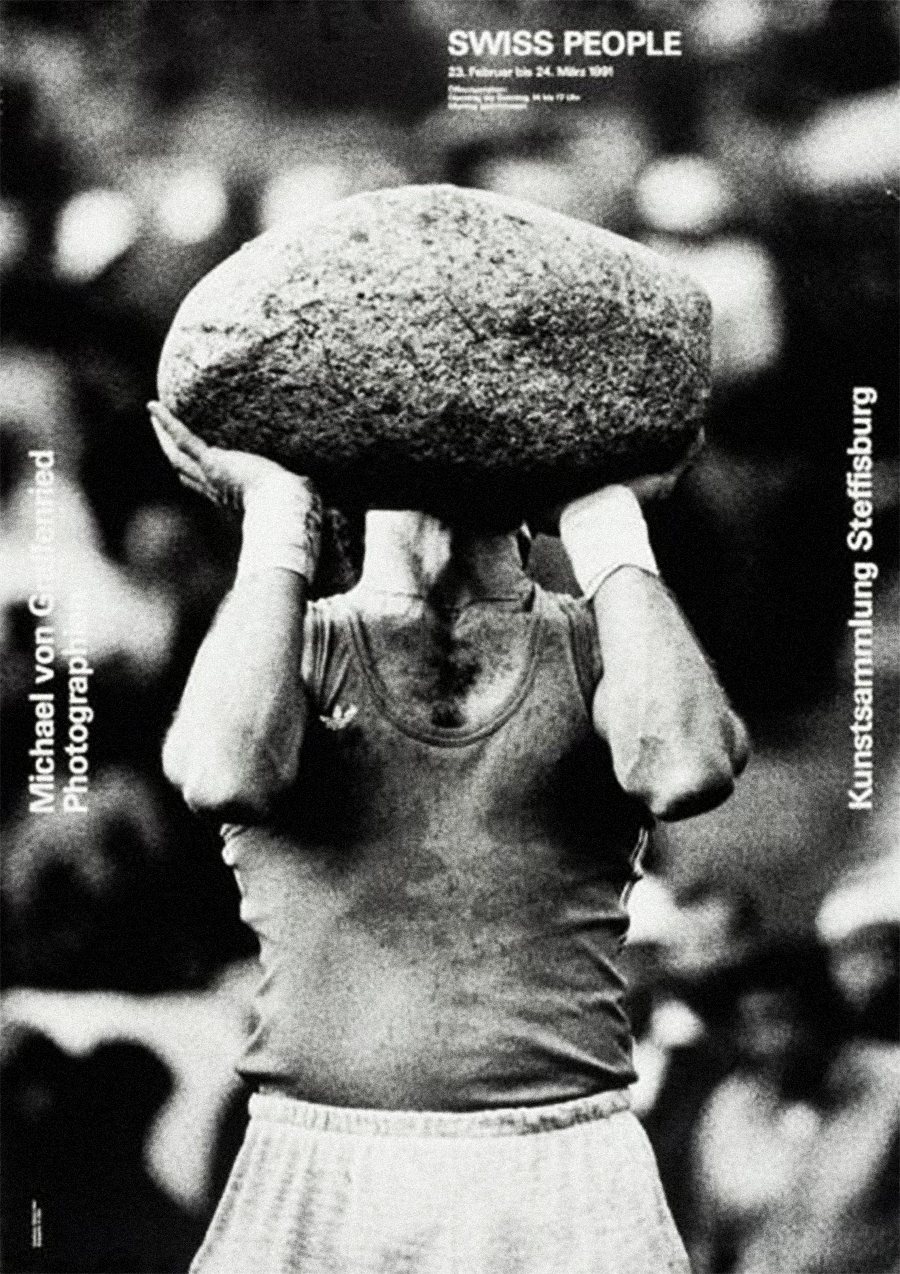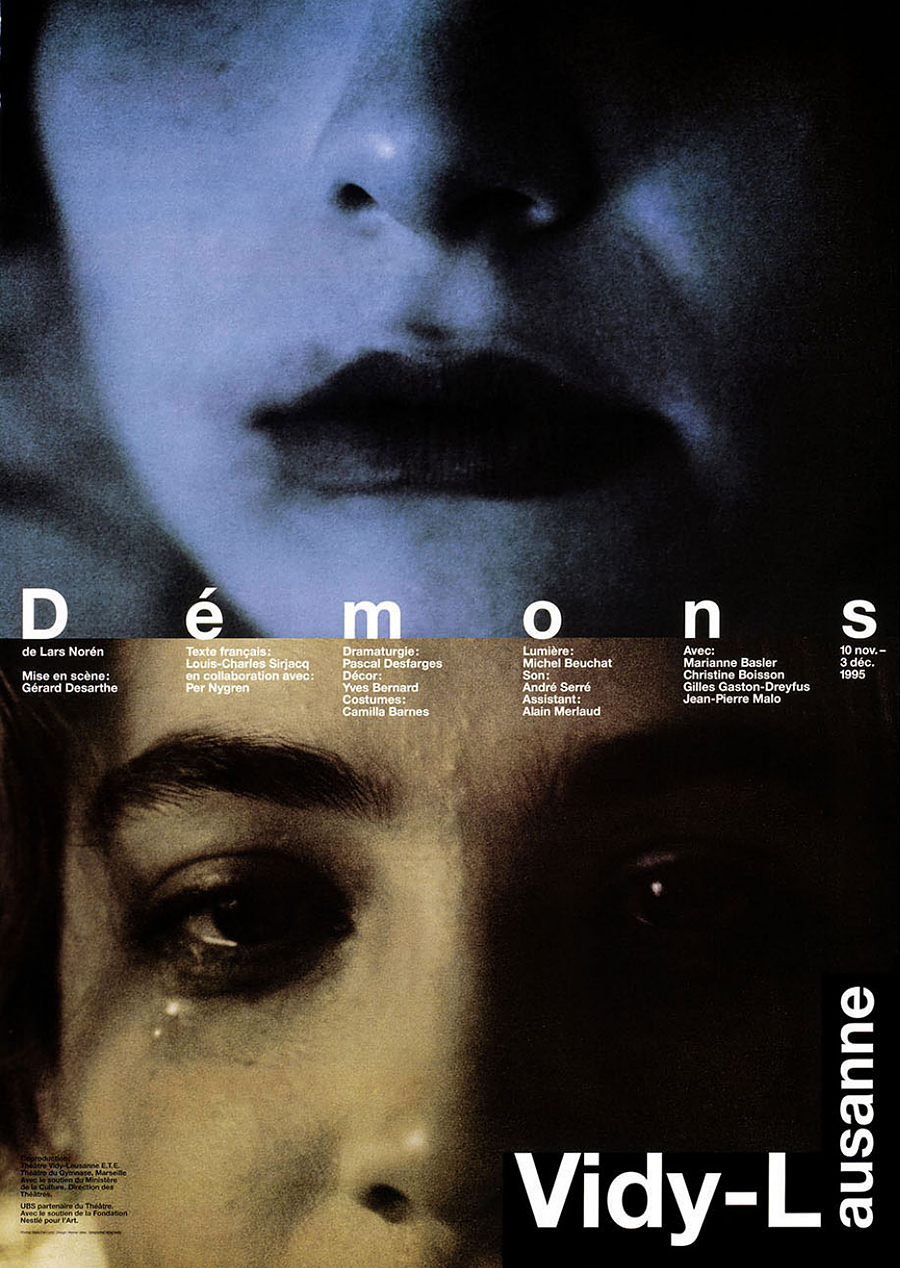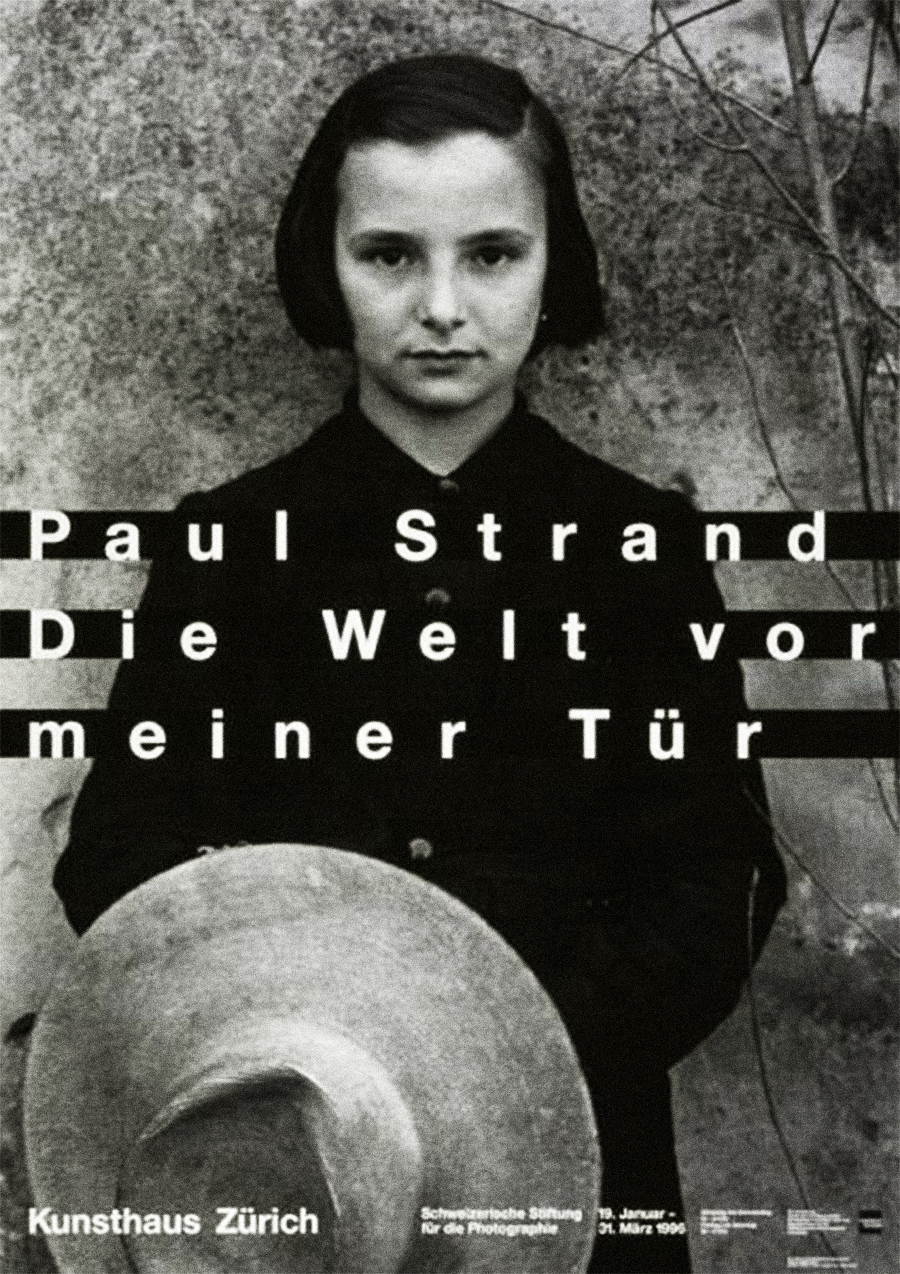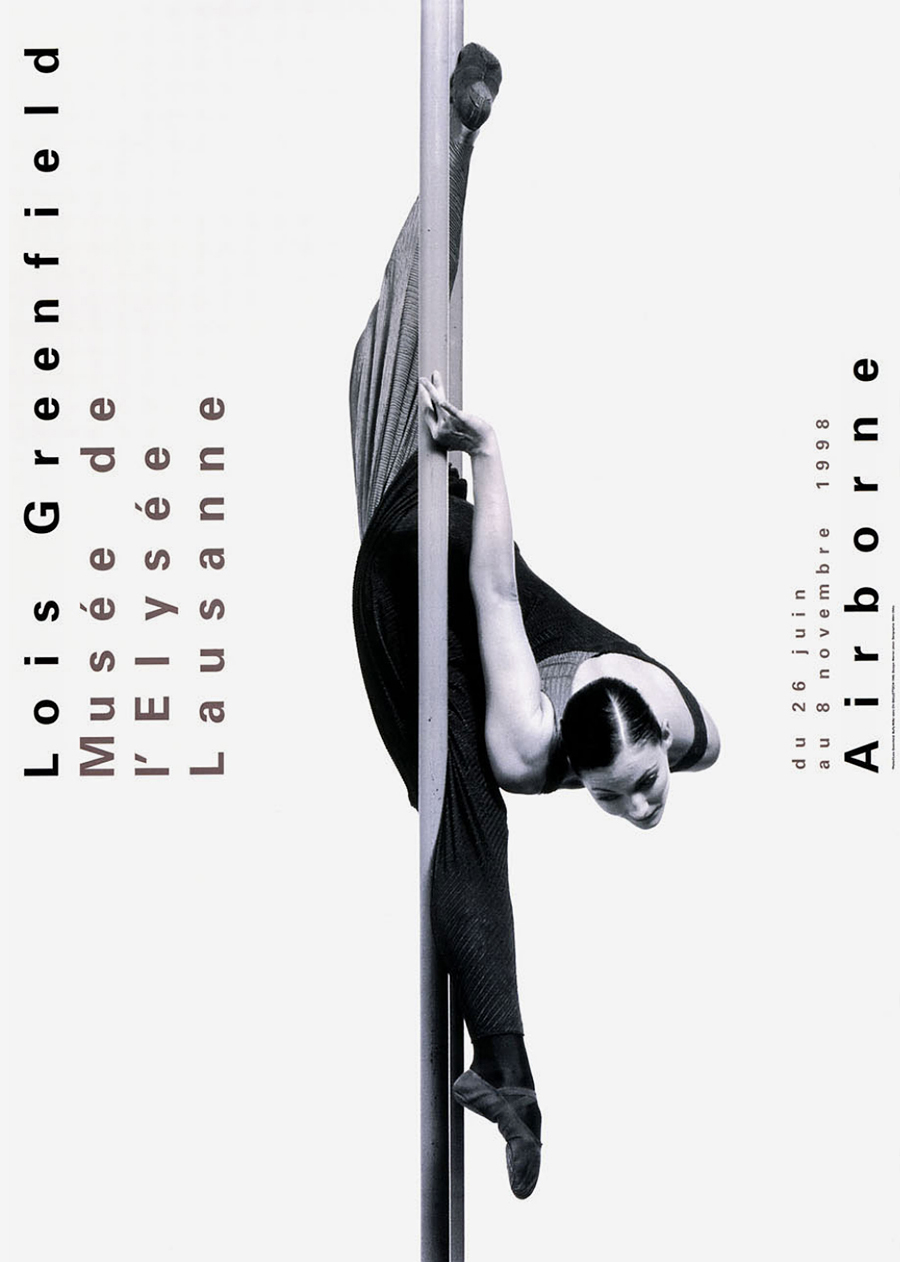Werner Jeker
Mümliswil, Switzerland, 1944
Who’s Who
Werner Jeker is a prominent Swiss graphic designer.
Since 1965 he has been living and working in Lausanne, where he set up his own studio in 1972. In 1983 he co-founded Les Ateliers du Nord, a multi-disciplinary design firm, focusing on poster and book design.
During his career, he served prestigious clients including the Collection de l’Art Brut, Fotostiftung Schweiz (Swiss Foundation of Photography), L’OCG (Geneva Chamber Orchestra), Magnum Photos, the Musée de l’Élysée, Phaidon Press, and Théâtre Vidy. He has been also Art Director of Communication for Weimar ’99 Cultural Capital of Europe.
Jeker is one of the very few designers working in the 1980s that produced an original contribution to graphic design during the chaotic era that coincided with the diffusion of the personal computer. He developed a strong but sophisticated graphic language through the use of cinematic layouts and beautiful photographs.
He taught at the École des Beaux Arts in Lausanne—today known as the ECAL—where from 1974 to 1986 he was Head of the Graphic Design Department. He also taught at the Akademie der Bildenden Künste (Academy of Fine Arts) in Karlsruhe in 1995-97, and was co-responsible of the Visual Communication Department at the Hoschule der Künste Bern (University of Arts) from 2003 to 2007.
Member of AGI (Alliance Graphique Internationale) since 1989. He received several national and international recognitions, including the award for the “Exceptional use of photography in graphic design” in 1988 from the International Center of Photography, New York, and the first prize for Swiss Banknotes Competition in 1989.
Enjoy your reading,
 TO THE TOP ↑
TO THE TOP ↑
Q&A
Published Jan 27, 2014
Recorded Sep 6, 2013
When you were a child, what job were you dreaming of for your future?
I only ever wanted to draw, to make pictures.
What was your educational path?
Apprenticeship as a graphic artist with a master, Hugo Wetli.
[Note: He was a renowned Swiss painter and graphic artist, who designed a beautiful poster campaign for Swissair in the late 1950s.]
Which was your favourite subject at school?
Drawing.
When and how did your career start?
When I was born?
How your design has evolved since that time?
At first I was an illustrator, I drew. Later I wanted more information and specifically to bring together the various components: picture, text, and format came into play, began to influence each other.
What is the project that you remember with more pleasure and interest?
To design the whole construction space and the visual images for the pavilion Signalpain at the the Swiss National Exhibition Expo 2002. The question regarding interdisciplinary works was a given in this project. For four years I seemed to live and work only for this exhibition. I had already planned exhibitions, but the pavilion Signalpain exploded all boundaries of anything that had gone before. It was as if my world became three-dimensional. I underwent a change, the results of wich can be seen in my work today.
A designer that you admire.
I can't say I admire them, but several designers influenced me. Of course my teacher Hugo Wetli, but also Alfred Kubin, Heinz Edelmann, A.M. Cassandre, and Alexey Brodovitch among others.
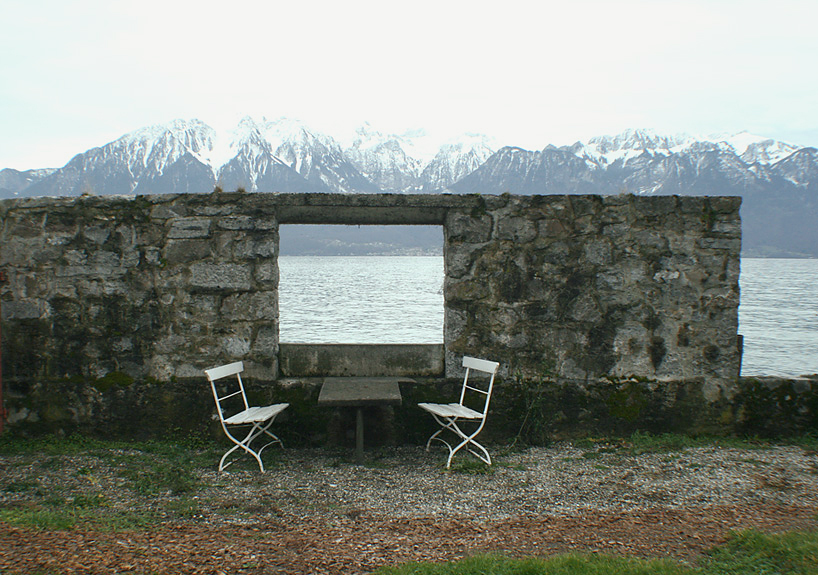 A view from the garden of Villa Le Lac by Le Corbusier. Photo: Storp Weber, 2013.
A piece of architecture.
A view from the garden of Villa Le Lac by Le Corbusier. Photo: Storp Weber, 2013.
A piece of architecture.
The small Villa Le Lac from Le Corbusier in Vevey, Switzerland.
A typeface.
Helvetica by
Max Miedinger.
How do you approach the design of a new project?
I like to make a lot of research and spend time thinking about it.
Many of your design use just black and white. How would you describe your approach to color?
I like to keep things simple. I do graphic design, not painting. I use color in a very conscious way, creating tension by using color.
Without considering technology, what are the differences between the design from the past and the current one?
I don’t think there are differences.
What would you recommend to a young designer?
Be yourself and keep your eyes wide open.
A definition of good design.
Reduced to the essential.
What job would you have done, if you had not become a designer?
The gardener.
What was your favorite game when you were a child?
Hide-and-seek.
Thank you very much.
Thanks.
© 2013-16 Werner Jeker, Nicola-Matteo Munari. All rights reserved.
TO THE TOP ↑
Portfolio
Marionettes
Poster, c.128×90.5 cm
1980
Glas aus USA
Poster, c.128×90.5 cm
1986
Designed for the Museum Bellerive, Zurich.
Le Corbusier
Poster, c.128×90 cm
1987
Designed for the Musée des Beaux-Arts, Comité officiel Le Corbusier, La Chaux-de-Fonds. Photo by André Villers.
Magnum
Poster, c.128×90.5 cm
1990
Designed for the Kunsthaus Zürich.
Swiss People
Poster, c.128×90.5 cm
1991
Designed for the Kunstsammlung Steffisburg.
Démons
Poster, 128×90.5 cm
1995
Paul Strand
Poster, 128×90.5 cm
1996
The text reads: “The world outside my Door.” Designed for an exhibition organized by the Swiss Foundation for Photography at the Kunsthaus Zürich.
Lois Greenfield
Poster, 128×90.5 cm
1998
A beautiful poster for an exhibition dedicated to the American dance photographer Lois Greenfield, Musee de l’Elysée, Lausanne. The simple 90 degrees rotation strongly emphasizes the vertical axis of the image.
Saison Vidy 06/07
Poster, 128×89.5 cm
2006
Photo by Ramón López.
Links & Docs
Articles
RTS Designsuisse
Profiles
AGI Werner Jeker
Les Ateliers du Nord Official Website
Werner Jeker Official Website
Thinking Form Werner Jeker
Projects
eMuseum Werner Jeker
Thinking Form Mario Botta by Pino Musi
TO THE TOP ↑
Comments
Follow on Facebook
Partnerships

Archivio Grafica Italiana is the first digital resource to the Italian graphic design heritage. Founded by Nicola Munari in 2015.

Design consultancy based in Piacenza, Italy. Founded by Nicola Munari in 2015, it operates in the whole field of design.
TO THE TOP ↑
© 2013-16 Nicola-Matteo Munari. All rights reserved.

 A view from the garden of Villa Le Lac by Le Corbusier. Photo: Storp Weber, 2013.
A view from the garden of Villa Le Lac by Le Corbusier. Photo: Storp Weber, 2013.
